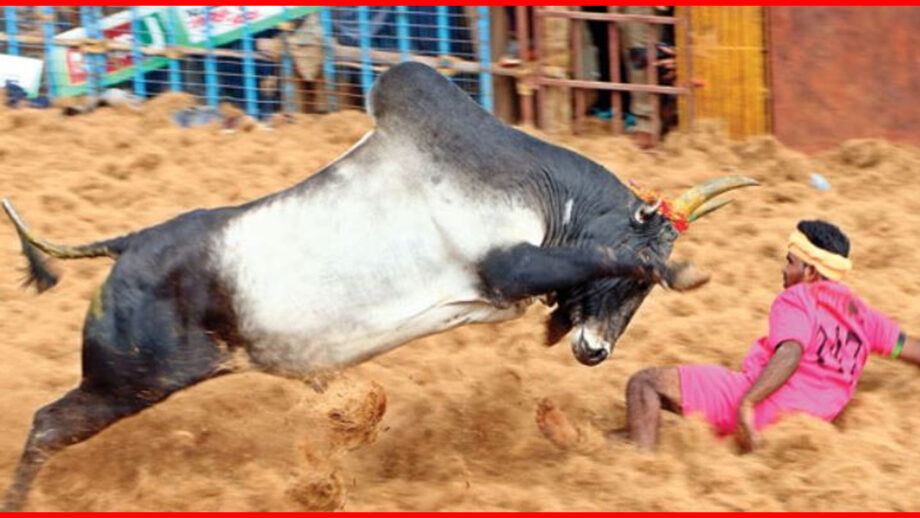The traditional bull-taming festival is also known as ‘Jallikattu’. It’s a traditional event in which a bull such as the ‘pulikulam’ or ‘kangayam’ breeds, is released in the crowd and a score of humans attempt to grab the bull back with both arms. Let’s look at the history of the festival. This festival is practised extensively in the state of Tamil Nadu during the classical period 400 B.C.. It was a common practice among the ‘Ayar’ people who lived in the Mulai division of ancient Tamil Nadu. After centuries, it became a platform for the display of bravery, and prize money was introduced for encouragement. Also, a cave painting done in white kaolin was discovered in the Madurai region depicting a lone man controlling bull. The painting is approximately 1500 years old. This proves how old this tradition is.
Let’s also look at how the festival is celebrated these days. Bull breeds, released in the crowd and multiple people try to grab it and at the same time, while the bull tries to escape. Participants normally hold on to the hump to stop the bull. At some times participants tend to ride long enough in order to remove flags off the bull’s horn.
The sport is mostly practiced Indian State of Tamil Nadu as a ritualistic part of the Pongal festival on Mattu Pongal, which occurs annually in the month of January. This festival is of a controversial sort. As there were incidents braved by humans and animals too. The Animal Rights Organisation has applied for a ban on this festival. Even courts have banned it on several occasions in the past. However, people protest against the ban, and the ordinance was formed in 2017 to continue the ban.
Jallikattu is often shown in many popular movies.


